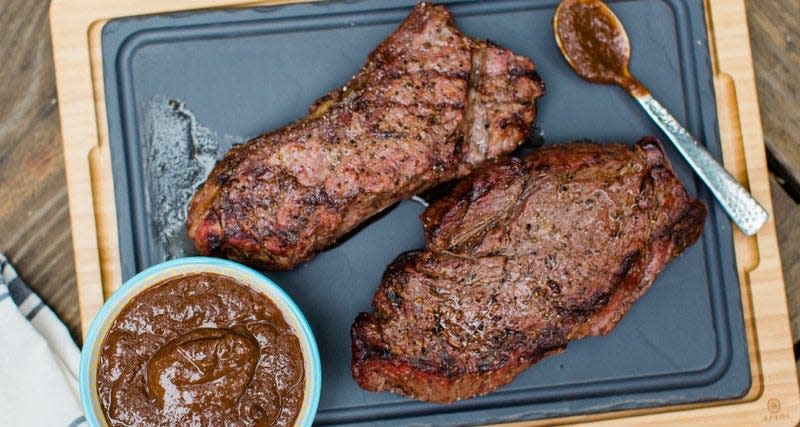How to cook steak: Here are tips to cook steak perfectly, plus debunking common myths
The disapproving head shake, the perplexed grunt or the sanctimonious sentence that begins, “Well, actually…” are all tell-tale signs that the self-appointed food police are hanging around your grill or stove.
In an age when everyone’s an expert and not afraid to let you know, we’ll help cut through the bad information and dispel some common fallacies about cooking steak.
Whether you fancy preparing beef on the grill or in a pan, you can forget about these three meat-related myths.
Myth 1: Searing locks in juices

Any time I hear someone extol the glories of searing a steak for the pure purpose of keeping the juices inside, I instantly cringe. By nature, any animal protein is very porous, and searing meat will never form an impenetrable fortress around the outside where no moisture can escape. Try searing a piece of meat and then letting it rest for five minutes; you’ll notice a small puddle of the natural juices pooling around the bottom and emerging from the exposed surfaces.
In fact, a hard sear destroys the exterior cells, actually causing water loss as the meat fibers contract. Why bother searing, then? That crust you work so hard to achieve is more about flavor than moisture retention. A great crust is the sign of the Maillard reaction (a.k.a. browning) in which the proteins in the meat break down into amino acids, and these amino acids bond and mix with sugars. The result is not only a beautiful color, but also a rich, beefy flavor.
Myth 2: Only flip steak once
Feel free to flip your steak as much as you want; in fact, it’s best to flip every 30 seconds or so. Yep, you heard that right. While it’s true that constantly moving and flipping your steak will prolong the browning process, evenly transferring heat to both sides of the meat provides a more consistent doneness. (And don’t worry, your steak will still get great color using this method.)
Moreover, rapid flipping results in a steak that cooks faster than the single-flipping method. (Just test it.) And, depending on the heat of your grill or pan, you can minimize the danger of burning your steak before the center is cooked to your liking by flipping it multiple times while cooking.

Another benefit? You won’t run the risk of steaks with curled edges; meat fibers contract and curl when cooked quickly, as with a single-flipped, hard-seared steak. So, by flipping often, you might sacrifice the Hollywood grill marks, but you’ll be chowing down on a steak that’s evenly cooked and shaped.
Myth 3: Don’t salt steak too early
The notion behind this oft-repeated myth is that salt dries out and toughens the meat if applied too early. Perhaps this idea originated from the same thought behind searing meat to lock in the juices, but the reality is that you actually do want a dry exterior for searing (and salt is not going to toughen the meat).
Salt acts as a desiccant, pulling water from meat fibers. As the salt works its magic, it will create a brine of sorts on the surface of the meat. After some time — at least one hour — this brine will reabsorb into the steak, yielding a better seasoned, juicier piece of meat.

Feel free to salt your steak the night before cooking, then store it uncovered in the refrigerator. The salt will have ample time to absorb, and the exterior will be bone dry — perfect for achieving a juicy steak with a dynamite sear.
If you don’t have the time to salt in advance, wait to season until just before cooking the steak. You definitely don’t want to throw it on the grill after 10 or 15 minutes of salting; this is the time when the water pulled from the meat will still be sitting on the outside of the steak, causing it to steam instead of brown.
Another salting sin to avoid is salting your steak after cooking. This error leads to grainy, insipid meat that just tastes salty on the surface. This rule, however, does not apply to finishing salts, such as English Maldon sea salt or fleur de sel, added in addition to pre-cooked seasoning. These salts will offer added texture and do not absorb into the steak.
This article originally appeared on Southern Kitchen: How to cook steak: 3 common myths debunked

